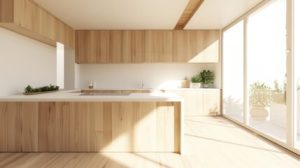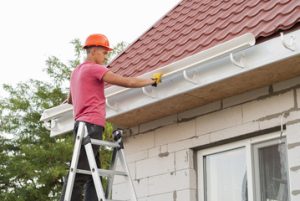Regular Septic Tank Pumping prevents sewage backups in the toilets and drains, which can cause expensive damage and health hazards. It also reduces the risk of a sewage leak, which can contaminate local water sources.

Neglecting septic tank pumping can lead to environmental contamination, resulting in disease-causing pathogens leaking into soil and water sources. This poses a serious threat to human health and wildlife.
While septic tank pumping is not one of the most exciting things on your to-do list, it is an important part of managing household waste properly. By getting a professional service provider to do it regularly, you’ll avoid the foul odors and costly repairs that can result from a neglected tank. Moreover, it will give you peace of mind to know that your system is ready for the increase in water usage that comes with summer.
A well-maintained septic tank system is not only good for your family; it’s also good for the environment. When your septic tank isn’t adequately emptied, solid waste can seep into your drain field and contaminate groundwater, which can have a negative impact on local ecosystems. By scheduling routine septic tank cleaning and pumping, you can prevent environmental contamination, protecting your home, community, and nearby rivers and streams.
Moreover, it’s worth mentioning that a healthy septic tank extends its lifespan, saving you money in the long run. A professional septic tank service provider will perform regular inspections, looking for signs of wear and tear and dislodging solidified sludge with high-powered equipment. In addition, they will check to make sure your septic system is compliant with all applicable rules and regulations.
Septic tank system ownership offers a host of benefits, including cost savings, independence from municipal infrastructure, and property value appreciation. However, a poorly maintained septic system can cause costly problems that can negatively affect your health and the functionality of your home. By having a professional service provider take care of routine septic tank pumping, you can avoid major expenses and keep your septic tank in top condition.
While septic tank pumping isn’t the most appealing thing to add to your summer to-do list, it should be a priority. By ensuring your tank is properly pumped, you can avoid dreaded sewage odors, save on costly repairs, protect the environment, and get your home ready for summer fun. So, before you fire up the grill and head to the beach, schedule an appointment for septic tank pumping today!
Saves You Money
One of the best ways to avoid costly septic system repairs is by maintaining routine pumping. A septic tank that isn’t pumped regularly will build up with solid waste and sludge, which can damage the drain field. This waste will eventually clog your home’s drains, resulting in sewage backup and unpleasant odors. Regular septic tank pumping will save you from having to pay for costly repair bills and may even extend the lifespan of your septic system.
Septic tanks aren’t cheap, and they aren’t meant to last forever. If you neglect to schedule routine maintenance, your septic system will need to be replaced sooner than it should. Properly maintained septic systems can last for 20 to 40 years, but this is only possible with routine pumping and proper care. When you invest in routine septic tank pumping, you can avoid costly system replacement and preserve the value of your property.
If you’re not sure how often to have your septic tank pumped, it’s important to speak with a local septic system professional. They will be able to assess your household’s unique needs and recommend the appropriate service interval. A number of factors can affect your septic system’s wastewater flow, including the size of your household and how much water is used each day. A larger family will generate more inbound waste, requiring the tank to be pumped more frequently than a small, single-family residence.
In addition to the standard frequency recommended by septic tank professionals, you should also keep in mind that a septic system that is backed up with solid waste will require a more comprehensive cleaning and flushing process. This is called septic system cleaning, and it involves the complete evacuation of all liquid and solid waste from your entire septic system. It’s a more extensive service than simply pumping the septic tank and is typically required every 2-3 years.
Prevents Environmental Contamination
Septic tanks provide a convenient, efficient solution for wastewater treatment by effectively breaking down solid waste through an anaerobic digestion process. This allows soil to absorb the treated effluent, minimizing environmental contamination. However, improper maintenance and frequent system failures can lead to sewage seepage into the surrounding environment. This contaminates groundwater sources, harming plant and animal life and potentially posing health risks to people. Regular septic tank pumping helps prevent this.
Sludge and scum buildup in a septic tank reduces the capacity of the tank, limiting the amount of wastewater that can enter. The heavier solid waste settles at the bottom of the tank, while the lighter scum floats to the top. Without regular septic tank pumping, the sludge and scum levels can become excessive, leading to clogged drains, septic system backups, and system failure. The frequency of septic tank pumping depends on household size and usage patterns. A larger family and more household appliances will lead to a higher volume of household wastewater, requiring the septic tank to be pumped out more frequently.
In addition to preventing septic tank overflow, regular pumping also prevents the discharge of untreated sewage into the environment. Inadequate septic tank maintenance can cause the sludge and scum to rise to the drain field, where it can contaminate the water supply. This contaminated water can cause health hazards, including gastrointestinal symptoms and other infections.
Poor septic tank maintenance can also lead to groundwater pollution. Overflowing septic tanks release pathogens into the groundwater supply, causing bacterial contamination that may affect human health. In addition, overflowing septic tanks can leach toxins into the soil, contaminating local waterways and threatening drinking water quality.
Signs of septic system issues include slow-draining toilets, sinks, and showers. Foul odors around the home, especially in the basement, are another indicator of problems. Finally, unusually green or lush vegetation over the drainfield can indicate that wastewater is surfacing rather than being absorbed into the soil. Regular septic tank pumping prevents these and other problems from developing, helping your septic system remain a reliable part of your home.
Increases Your Home’s Value
Septic systems offer a variety of benefits, including cost savings and environmental sustainability. They also provide flexibility in property development, independence from centralized municipal infrastructure, and improved wastewater treatment. Regular septic tank pumping and maintenance help you stay in compliance with local environmental regulations. In addition, a well-maintained septic system increases your home’s value, which can make it easier to sell when you decide to move.
When wastewater leaves your home, it travels to the septic tank, where it separates into three layers. The top layer, called scum, consists of oils and fats. The middle layer is wastewater, and the bottom layer is sewage. Regular septic tank pumping keeps these layers from building up and blocking the septic system, preventing costly repairs and wastewater overflow.
A septic tank is a complex system that requires regular inspections to ensure it’s functioning properly. During these inspections, a professional can check for leaks, cracks, and other problems that may need to be addressed. They can also recommend upgrades or expansions that will improve the septic system’s performance.
Over time, septic tanks can become full of solid waste and produce a foul odor. When this happens, septic tank pumping is necessary to remove the sludge and prevent odor-causing overflows. A septic tank that isn’t pumped regularly can overflow and cause sewage to seep into the surrounding soil, which can be dangerous for pets and children.
Another sign of a full septic tank is wet spots in the yard. This occurs when sewage seeps into the groundwater supply or contaminates nearby ponds or lakes. The resulting algal blooms can be toxic to wildlife and humans. If you notice any of these signs, it’s time to schedule a septic tank pumping.
A healthy, functioning septic system is a desirable feature for prospective buyers, especially in areas with limited municipal sewer connections. In fact, a septic system can boost your home’s value by as much as 30%. A history of regular maintenance is also important when preparing to sell your home, so scheduling routine pumping and keeping records of system upgrades can help you get the most out of your investment.



